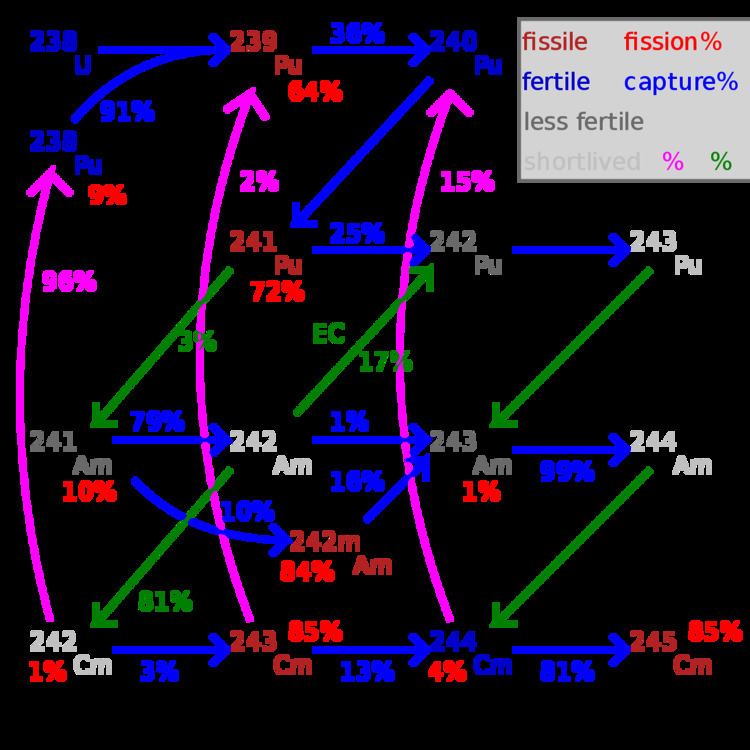 | ||
Fertile material is a material that, although not itself fissionable by thermal neutrons, can be converted into a fissile material by neutron absorption and subsequent nuclei conversions.
Contents
Naturally occurring fertile materials
Naturally occurring fertile materials that can be converted into a fissile material by irradiation in a reactor include:
Artificial isotopes formed in the reactor which can be converted into fissile material by one neutron capture include:
Some other actinides need more than one neutron capture before arriving at an isotope which is both fissile and long-lived enough to probably be able to capture another neutron and fission instead of decaying.
Since these require a total of 3 or 4 thermal neutrons to eventually fission, and a thermal neutron fission generates only about 2 to 3 neutrons, these nuclides represent a net loss of neutrons. In a fast reactor, they may require fewer neutrons to achieve fission, as well as producing more neutrons when they do fission.
Fissile materials from fertile materials
A fast-neutron reactor, meaning one with little or no neutron moderator and hence utilising fast neutrons, can be configured as a breeder reactor, producing more fissile material than it consumes, using fertile material in a blanket around the core, or contained in special fuel rods. Since plutonium-238, plutonium-240 and plutonium-242 are fertile, accumulation of these and other nonfissile isotopes is less of a problem than in thermal reactors, which cannot burn them efficiently. Breeder reactors using thermal-spectrum neutrons are only practical if the thorium fuel cycle is used, as uranium-233 fissions far more reliably with thermal neutrons than plutonium-239.
Applications
Proposed applications for fertile material includes a space-based facility for the manufacture of fissile material for spacecraft nuclear propulsion. The facility would notionally transport fertile materials from Earth, safely through the atmosphere, and locate them at a space facility at the Earth–Moon L1 Lagrangian point where manufacture of fissile material would occur, eliminating the safety risk of transport of fissile materials from Earth.
